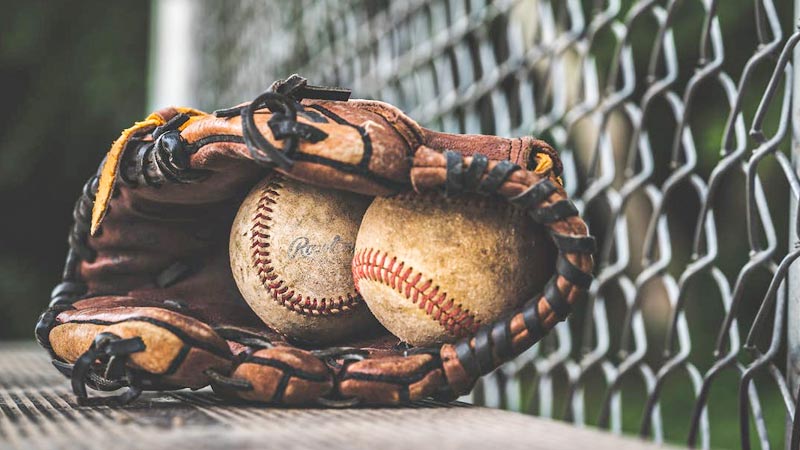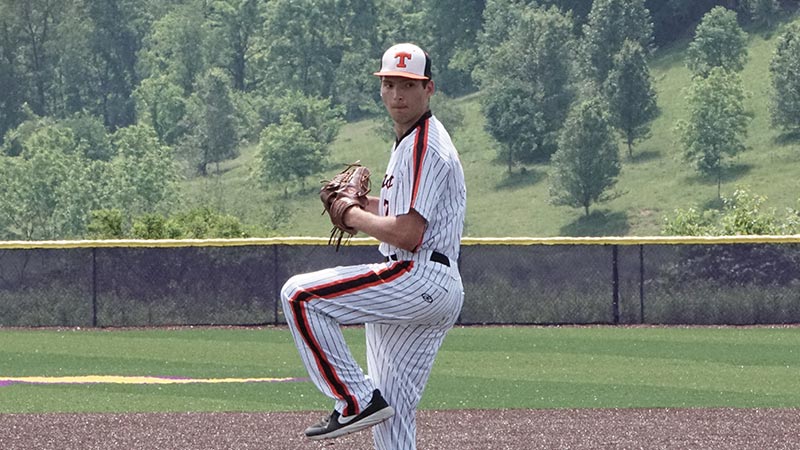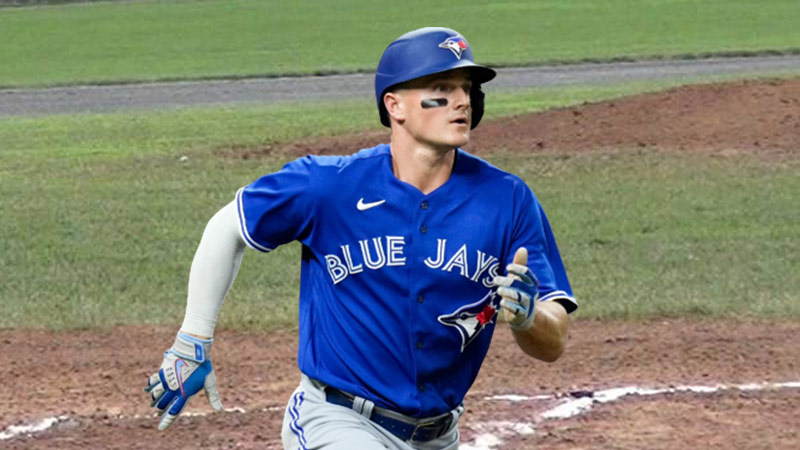Welcome to the quirky world of baseball, where the game’s rich history is peppered with some truly bizarre rules. From strange traditions to peculiar regulations, this beloved sport has a few surprises up its sleeve.
In this blog, we’ll dive into the fascinating realm of weird rules in baseball. Get ready to uncover the hidden gems of this national pastime and discover just how wonderfully peculiar the game can be. So grab your glove and let’s step up to the plate, where the unexpected is the name of the game.
The Infamous Infield Fly Rule
Check out some of the aspects of the infamous infield fly rule in a standard baseball game. Here they are.
Complexity of the Rule
The infield fly rule may seem convoluted at first glance, but its purpose becomes clearer with closer examination. According to the rule, an infield fly is a fair fly ball that can be caught by an infielder with ordinary effort when there are runners on first and second base (or bases loaded) with less than two outs.
In such situations, the batter is automatically declared out, regardless of whether the ball is actually caught or dropped. This unique rule aims to prevent infielders from intentionally dropping an easy pop-up to create a double or triple play.
The Purpose Behind the Infield Fly Rule
The infield fly rule serves as a safeguard against unsportsmanlike tactics that could unfairly exploit the presence of baserunners. By declaring the batter out in this specific situation, the rule ensures that the runners are not caught in a vulnerable position and protects the integrity of the game.
Although it may appear counterintuitive to casual observers, the infield fly rule is designed to maintain a level playing field and prevent strategic manipulation of game outcomes.
Controversial Moments and Unique Applications
Over the years, the infield fly rule has generated its fair share of controversies and unusual applications. From instances where umpires misinterpreted the rule to rare scenarios where the rule was applied in unexpected situations, these occurrences have added to the intrigue surrounding the rule.
Notable controversial moments, such as the infamous “Infield Fly” call during the 2012 National League Wild Card Game, have sparked intense debates among players, coaches, and fans alike.
Exploring these incidents sheds light on the nuances and occasional inconsistencies in the enforcement of the infield fly rule.
The complexities of the infield fly rule, understanding its purpose, and examining its controversial moments and unique applications, we gain a deeper appreciation for the intricacies of baseball’s rulebook.
The infield fly rule may continue to puzzle us, but it remains an integral part of the game, adding another layer of strategy and intrigue to America’s pastime.
Dropped Third Strike Quirkiness
This part will put light on some prospects of dropped third strike quirkiness rule of a baseball game.
The Curious Nature of the Dropped Third Strike Rule
At first glance, the dropped third-strike rule appears counterintuitive. According to this rule, if a batter swings and misses at a pitch for the third strike, but the catcher fails to catch the ball cleanly, the batter has the opportunity to advance to first base.
This seemingly odd provision creates scenarios where a batter can go from being on the brink of an out to safely reaching base, adding an element of unpredictability to the game.
Exceptions and Nuances of the Rule
While the dropped third-strike rule may appear straightforward, there are exceptions and nuances that can complicate its application. For instance, if the first base is already occupied with fewer than two outs, the batter is not automatically entitled to advance to the first base.
Additionally, if the third strike is called by the umpire before the ball hits the ground, the batter is out regardless of the catcher’s ability to catch the ball.
These exceptions and intricacies further contribute to the quirkiness of the rule and require careful attention from players, coaches, and umpires.
Potential Reasons Behind the Rule’s Existence
The existence of the dropped third-strike rule begs the question: why is such a rule in place? While there is no definitive answer, several theories shed light on its potential reasons.
One theory suggests that the rule was initially implemented to balance the game between pitchers and hitters, providing batters with a chance to recover from a missed swing.
Another theory proposes that the rule emerged as a way to prevent excessive delays caused by catchers intentionally dropping third strikes to initiate multiple outs.
Regardless of its origins, the dropped third-strike rule adds a layer of excitement and strategic considerations to the game.
The dropped third strike rule’s peculiarities, exceptions, and potential reasons behind its existence showcase the unique nature of baseball’s rulebook.
While it may seem unusual at first, this rule contributes to the richness and unpredictability of the sport. As fans and players alike witness the unexpected outcomes resulting from a dropped third strike, they are reminded that baseball is a game that continuously surprises and delights.
The “Glove on Ball” Situation

Have you heard about the rule called, “Glove on Ball” in a baseball match? Check below to get some ideas on that.
Rare Instances of Fielders Throwing Gloves at the Ball
Although throwing a glove at the ball is not a common practice, there have been instances in baseball history where fielders have resorted to this unconventional tactic.
These situations often arise when a fielder has lost control of their grip on the ball or when they are trying to stop a ball from going out of play.
While these occurrences are infrequent, they captivate the attention of fans and spark debates about the legality and consequences of such actions.
The Outcome and Proper Base Awarding
When a fielder throws their glove at the ball, the outcome and subsequent base awarding can vary depending on the circumstances.
According to the rules, if a thrown glove makes contact with a live ball and hinders a runner’s progress, the umpire has the discretion to determine the appropriate base awarding based on their judgment of what the runner would have achieved without the interference.
This ruling can result in the awarding of additional bases to the runner or even a potential home run, depending on the situation and the umpire’s assessment of the play.
Ground Rule Doubles and Infield Fly Situations
The “glove on ball” situation raises questions about how it relates to other unique scenarios in baseball, such as ground rule doubles and infield fly situations.
In the case of ground-rule doubles, where a batted ball lands in a specific area of the field and automatically entitles the batter and baserunners to extra bases, the throwing of a glove at the ball could potentially influence the ruling on whether it should be considered a ground-rule double or a different outcome based on interference.
Similarly, when it comes to infield fly situations, where a pop-up is hit in the infield with runners on base, the throwing of a glove at the ball could lead to discussions about whether the infield fly rule should be applied or if the interference caused by the glove alters the play’s outcome.
The “glove on ball” situation adds a layer of intrigue and debate to the game of baseball. While rare, these instances captivate fans and challenge the interpretation of the rules.
As umpires make judgment calls and players adapt to unforeseen circumstances, baseball continues to provide surprises that keep fans engaged and the spirit of the game alive.
The Oddity of the Balk Rule
How odd the Balk Rule could be? Read the following part to get some ideas on that in a nutshell.
Purpose of the Balk Rule
At first glance, the balk rule may seem perplexing, but its purpose becomes clearer upon closer examination. The balk rule aims to maintain fairness and prevent pitchers from gaining an unfair advantage over baserunners.
It prohibits certain deceptive actions by pitchers, such as illegal motions or failing to come to a complete stop during the delivery, ensuring that baserunners have a fair chance to react and advance without being hindered by deceptive tactics.
Preventing Pitcher Deception and Blurring Roles

The balk rule serves as a deterrent against pitcher deception, maintaining the integrity of the game. By enforcing specific guidelines, the rule helps prevent pitchers from using tricky motions or actions that could confuse or mislead baserunners.
Additionally, the balk rule helps preserve the distinction between the roles of the pitcher and the fielders. It ensures that the pitcher’s actions remain within the boundaries of fairness and prevents them from unfairly mimicking fielding movements or altering their delivery in ways that blur the line between pitching and fielding.
Historical Context and Impact on the Game
The balk rule has a rich historical context that highlights its evolution and impact on the game of baseball. The rule has undergone various modifications throughout the years, with adjustments made to address new strategies and ensure fairness.
Its implementation has led to debates and controversies, with players, coaches, and fans questioning its application and interpretation.
The balk rule’s impact extends beyond the field, influencing game strategy and the development of pitching techniques as players adapt to comply with its regulations.
The balk rule stands as an oddity in the world of baseball, often causing confusion and frustration. However, it serves a crucial purpose by preventing pitcher deception and maintaining the integrity of the game.
As the rule continues to evolve and shape the dynamics of the sport, it remains an integral part of baseball’s intricate rulebook and adds another layer of complexity to the beloved game.
Miscellaneous Quirks and Unwritten Rules
Apart from all the previously mentioned rules, there are some unwritten rules of baseball. Check them out below.
The Unwritten Code of Conduct in Baseball
Baseball has a rich tradition of unwritten rules that guide player conduct and interactions on the field. These unwritten rules encompass various aspects of the game, from respecting the pitcher’s dominance to avoiding excessive celebrations after home runs.
The unwritten code of conduct promotes sportsmanship, respect, and fair play, fostering an environment where players uphold the integrity and traditions of the game.
Obscure Rules and Traditions
Beyond the official rules, baseball has its fair share of obscure rules and traditions that may surprise even the most avid fans. From the hidden ball trick to the hidden ball bag, these lesser-known rules and traditions can influence game outcomes and provide moments of unexpected excitement.
While some of these rules have faded into obscurity over time, they still hold a special place in baseball lore and contribute to the sport’s unique charm.
Curiosities Like Crossing the Pitcher’s Mound
Baseball is a game of intricate rituals and superstitions, and some curiosities extend beyond the rulebook. Crossing the pitcher’s mound, for example, is often considered a breach of etiquette and can lead to tensions between players.
Similarly, batting order mishaps, such as batting out of turn, can result in confusion and strategic advantages or disadvantages for teams.
These curiosities, while not explicitly addressed in the official rules, carry symbolic meaning and can affect the dynamics of the game in unexpected ways.
In the world of baseball, it is not just the official rules that shape the sport but also the unwritten code of conduct, obscure rules, and curious quirks that contribute to its allure.
These aspects add depth to the baseball experience, allowing fans to embrace the traditions, rituals, and idiosyncrasies that make the game so captivating.
Quirks and Unwritten Rules in Baseball
| Topic | Description |
| The Unwritten Code of Conduct in Baseball | Explores the unwritten rules that guide player conduct and interactions on the field, promoting sportsmanship and fair play. |
| Obscure Rules and Traditions | Highlights lesser-known rules and traditions in baseball, including the hidden ball trick and other unique game elements. |
| Curiosities like Crossing the Pitcher’s Mound and Batting Order Mishaps | Discusses peculiar occurrences such as crossing the pitcher’s mound and batting order mishaps that have symbolic significance and impact gameplay. |
FAQs
What are some common unwritten rules in baseball?
Common unwritten rules in baseball include not stealing bases when leading by a large margin, not bunting to break up a no-hitter, and not celebrating excessively after hitting a home run.
Are unwritten rules universally followed by all players?
While unwritten rules are respected by many players, there may be instances where players have different interpretations or choose not to follow them.
It can vary from team to team and player to player.
Are obscure rules like the hidden ball trick still used in modern baseball?
While the hidden ball trick is a rare occurrence, it can still be attempted in certain situations. However, due to increased awareness and technology, it has become more challenging to successfully execute.
Why is crossing the pitcher’s mound considered taboo?
Crossing the pitcher’s mound is seen as disrespectful because it disrupts the pitcher’s area, which is considered sacred ground. It is believed to bring bad luck or show a lack of sportsmanship.
What happens if a team bats out of order?
If a team bats out of order and the opposing team notices the mistake, the batter who should have been up is called out. Any advancements made by runners on base are nullified, and subsequent batters must bat in the correct order.
Are there any other unwritten rules or curiosities unique to specific cultures or regions?
Yes, there are cultural and regional variations in unwritten rules and curiosities in baseball. For example, the etiquette surrounding beanballs (intentionally throwing at a batter) may differ between different leagues and countries.
Conclusion
Baseball is a game filled with tradition and history, and along the way, it has developed some peculiar rules that may seem odd to newcomers. From the infield fly rule to the hidden ball trick, these quirky regulations add a unique charm to America’s favorite pastime.
While they may be confusing at first, embracing these weird rules can enhance your appreciation for the sport. So, the next time you watch a baseball game, remember to cherish the eccentricities that make it so special.
Share your thoughts on baseball with us, we are here to answer your queries. Thank you for your time.







